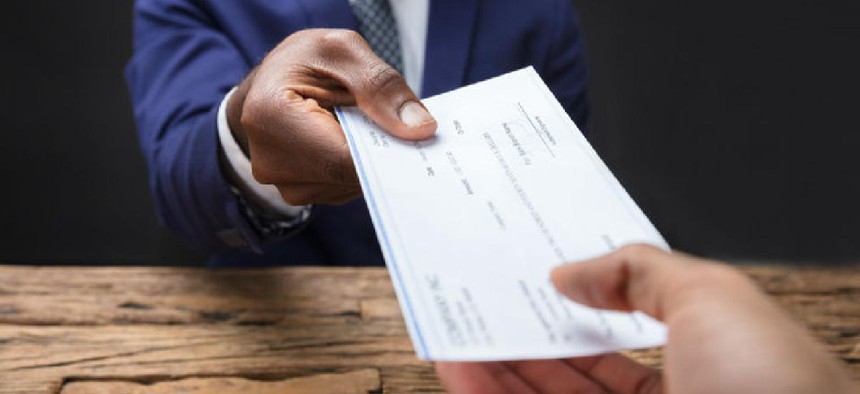The time to modernize government payroll systems is now

The federal government's leading evangelist of shared services explains why it makes sense to bring payroll to the cloud.

The federal government faces a pressing need to modernize and improve the way it runs its payroll business.
Every two weeks it pays over 2.2 million civilian employees with systems that are almost as old as the employees themselves. The average age of a federal employee is about 47, and some components of our federal payroll systems are over 40 years old. These components predate the internet, the personal computer and mobile phones. We can do better.
By moving to cloud-based technology, we can leverage the scale of the federal government and enable agencies to focus resources on core mission priorities. This transformation will reduce long-term costs, improve user experience, allow for the most up-to-date approach to cybersecurity and help agencies better manage budgets.
The lessons we learn from modernizing payroll can also provide a roadmap for modernizing and streamlining other administrative functions -- a key priority of this administration. Given that the government already has some experience with payroll consolidations, it is a logical place to start.
In 2002, the federal government began migrating 26 payroll centers to four, saving taxpayers more than $1 billion over 10 years and allowing agencies to redeploy resources to front-line missions. Currently, four agencies have the responsibility of paying the federal workforce, and they have created dependable and consistent payroll services.
However, our outdated and costly IT infrastructure limits providers' ability to adopt modern ways of business that drive improved efficiencies and outcomes. Often, legacy solutions are unable to easily share data, resulting in staff hours spent manually updating systems based on paper forms. Current time and attendance solutions either offer limited self-service options or require accessing a separate solution to record hours worked.
These experiences leave employees with less time to focus on the mission. If workers are responding to national disasters or fighting disease outbreaks, the last thing they should have to worry about is using multiple systems or manual processes to ensure they are compensated for their service.
A modern technology ecosystem for managing administrative functions, beginning with payroll and time and attendance, will help facilitate better use of standardized data, improve integration with human capital and finance systems, strengthen our security posture and enable a more mobile workforce. It is a compelling vision -- and it is a vision that is within our reach.
Over the past two years, the Office of Personnel Management, the General Services Administration and the federal shared service providers for payroll have been building common governmentwide standards that will allow the government to obtain a software-as-a-service solution for payroll and work schedule and leave management (WSLM).
In an important step toward realizing the benefits of utilizing innovative commercial solutions, GSA released a pre-solicitation notice for payroll and WSLM SaaS solutions on May 18.
Payroll modernization represents a tremendous opportunity for the government -- an opportunity that sits squarely at the intersection of the cross-agency priorities outlined in the President's Management Agenda: modernizing IT, sharing quality services, making better use of data, moving from low-value to high-value work and reimagining and maximizing the skills of the workforce we need for the future. GSA is excited and well-positioned to deliver value to our partners in government and taxpayers by helping facilitate this needed modernization.
NEXT STORY: Will an IT update revamp government?


